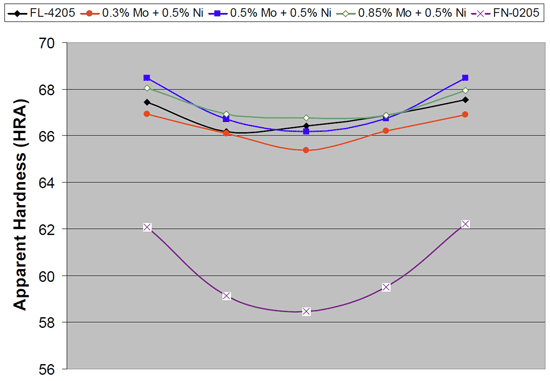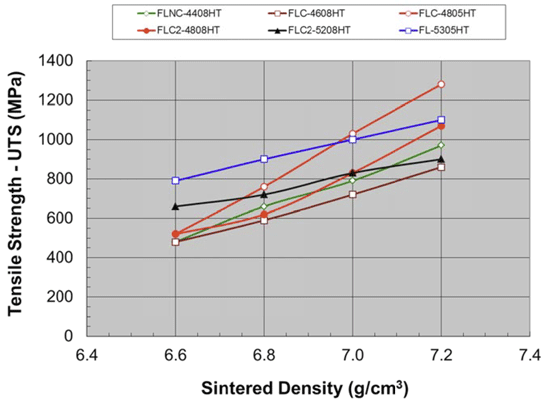PM2012 World Congress: Lean alloy developments deliver cost-effective ferrous PM materials
In recent years price increases/fluctuations for alloy additions have stimulated developments of ferrous PM grades with significantly lower overall alloy contents.
A review of the lean alloy grades introduced by Hoeganaes Corporation, USA, was presented in a paper by W Brian James, Bruce Lindsley and K S Narasimhan at the PM2012 Powder Metallurgy World Congress at Yokohama, Japan, October 14-18, 2012.
Lean ferrous PM alloys provide lower cost solutions for PM parts
This paper reviewed the lean alloy concepts introduced by Hoeganaes Corporation for PM parts used in each of three different conditions – as-sintered, quench-hardened and tempered and sinter-hardened and tempered.
As-sintered materials
For as-sintered materials, copper steels (FC-0205 and FC-0208) have been, and still remain, the major “workhorses” of the PM structural parts industry. Copper increases the strength of the ferrite in a ferrite/pearlite as-sintered microstructure, through solid solution strengthening. Copper steels can deliver yield strengths at 7.0 g/cm3 density in the range 330-420 N/mm2 and remain the cost-effective options in this strength range.
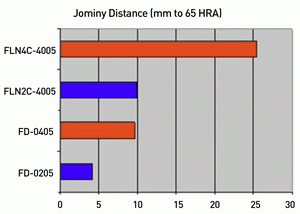
Fig. 1 Jominy hardenability comparison between
hybrid alloys based on a prealloyed (0.5% Mo)
powder (FLN2C-4005 and FLN4C-4005) and diffusion
alloys based on an iron powder (FD-0205 and
FD-0405) [1]
For higher strength parts used in the as-sintered condition, diffusion-alloyed and hybrid-alloyed materials, with copper, nickel and molybdenum as alloying elements, have often been selected. At equivalent alloying element levels, it has been demonstrated that hybrid alloys have higher hardenability than their diffusion-alloyed counterparts (Fig. 1) and this results in higher fractions of bainite and martensite in the microstructure. In view of this enhanced hardenability, hybrid alloys with lower molybdenum contents have been shown to match the performance of standard diffusion alloyed grades.
More recently, hybrid PM manganese steels, based on pre-alloyed powders with 0.5% or 0.85% Mo, have been introduced that match the strength of diffusion-alloyed grades in the as-sintered condition. These materials contain no Ni or Cu additions and therefore have much reduced total alloy content and can be sintered at 1120°C in a 90N2:10H2 atmosphere.
Higher performance lean alloy grades are also available. These include PM chromium steels that are hybrid alloys, based on 0.3 and 0.85% Mo prealloyed powders. These materials, even when cooled at standard sintering furnace cooling rates (<1°C/sec) form significant amounts of martensite, leading to high strength after a tempering treatment. These materials can again be sintered at 1120°C, but need a full 30 minutes at this temperature to induce the required degree of diffusion from the master-alloy addition used and, therefore, are generally viewed as being more suitable for high temperature sintering (1250°C).
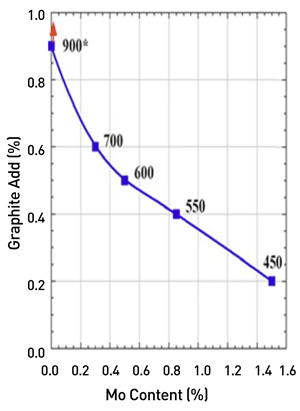
Fig. 2 Minimum graphite contents required for through
hardening oil quenched cylindrical compacts of 25 mm
diameter. [1]
Quench-hardened and tempered
For parts that are to be (oil) quench-hardened and tempered, a prealloyed powder with admixed graphite would generally be the initial material considered. The prealloyed material selected would be the leanest one with the necessary hardenability to create through hardening in the size of part being processed.
Prealloyed Ni-Mo steels were introduced in the 1970s and had good hardenability but reduced compressibility. Prealloyed powders with Mo as the principal alloy addition were introduced from 1990. Molybdenum alone has no significant effect on compressibility at levels up to 0.85% and, indeed, powders with 1.5% Mo are as compressible as some water atomised iron powders.
As Mo content is increased, the graphite addition required to through harden compacts 25 mm diameter x 25 mm height is reduced (Fig. 2). The average microindentation hardness level for each molybdenum/graphite combination is also quoted in Fig. 2.
Although diffusion-alloyed grades are often specified for quench-hardened and tempered applications, they are not as suitable for heat treatment because of their relatively lower hardenability compared with their hybrid alloy counterparts (see Fig. 1).
Recent work has shown that a hybrid alloy, based on a 0.3% Mo prealloyed powder and with 0.5% admixed Ni, can through harden in a compact of 13 mm diameter x 25 mm height, matching the performance of higher Mo content hybrid alloys and the FL-4205 prealloyed material (Fig. 3).
Sinter-hardened and tempered
Significantly higher hardenability is needed for PM materials that are to be sinter-hardened and tempered, as the cooling rates are much lower than for oil-quenching (1 to 3°C/sec compared with >100°C/sec).
Most ferrous PM materials used for sinter hardening are hybrid alloys containing admixed copper to enhance hardenability, although there are some hybrid or prealloyed PM chromium steels that do not need a copper addition. The challenge when developing sinter hardening grades is to attain the required hardenability while retaining adequate compressibility.
Furnaces with convective cooling systems allow larger parts to be sinter hardened and also permit leaner alloys to be used for small to medium sized parts.
The original sinter hardening grade was FLC-4608. More recently, new grades have been developed and have become standardised materials (FLC-4805, FLC2-4808 and FL-5305). Fig. 4 shows the sinter hardened tensile strength of these standardised grades.
Other new materials have been introduced commercially but have not yet become standardised.
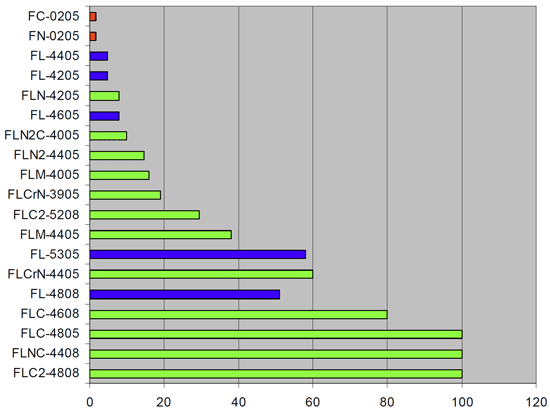
Fig. 5 Jominy distance (mm) to an apparent hardness of 65 HRA at a density of 7.0 g/cm3 for various ferrous PM materials. (red = admixed; blue = prealloyed; green = hybrid alloy)
The following are not currently MPIF standard grades – FLM-4005; FLM-4405; FLCrN-3905; FLCrN-4405 [1]
Fig. 5 demonstrated the relatively low hardenability of prealloyed and hybrid-alloy powders that are used for oil quenching compared with the much higher hardenability of powders developed for sinter hardening. Some of the intermediate hardenability materials (e.g. FLM-4005, FLM-4405 and FLCrN-3905) sinter harden at the cooling rates available with convective cooling systems.
The authors’ overall conclusion was that the next generation of ferrous PM materials will use alloy additions in a more effective way and will include alloying elements, such as Cr, Si and Mn, which have not traditionally be associated with PM.
Figure references
[1] From paper: ‘Lean Ferrous PM Alloys Provide Lower Cost Solutions for PM Parts’, W Brian James, Bruce Lindsley and K S Narasimhan, Hoeganaes Corporation, USA. Presented at the PM2012 World PM Congress, Yokohama, October 15-18
PM2012 World Congress Proceedings
Papers presented at the PM2012 World Congress will be published by the JPMA/JSP&PM in the Congress Proceedings, available in early 2013. Further information will be posted on the conference website.
News | Articles | Market reviews | Search directory | Subscribe to e-newsletter



